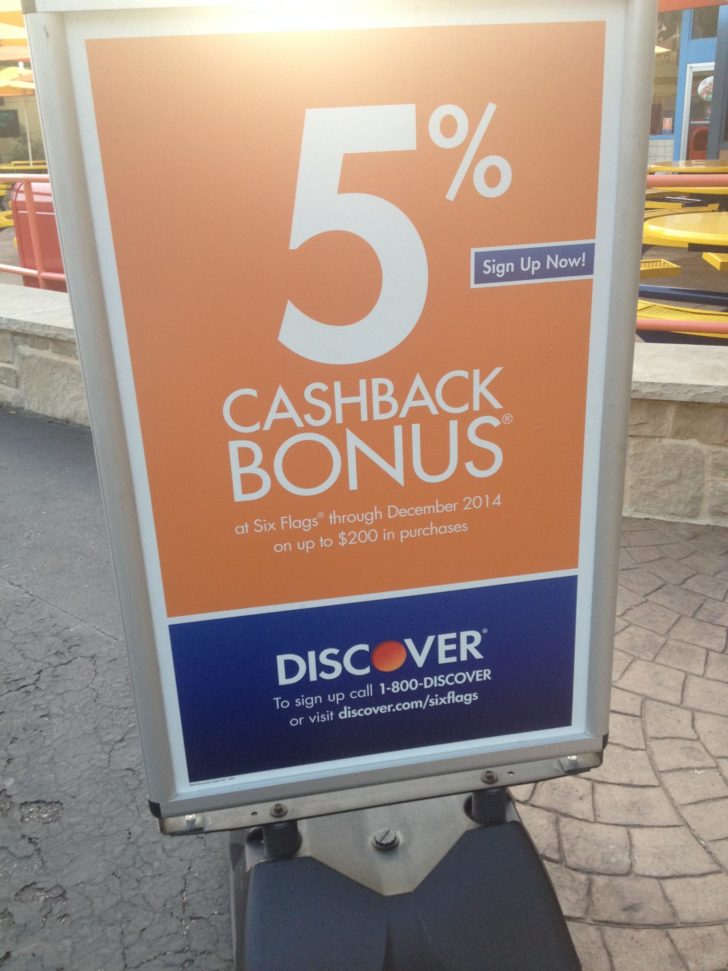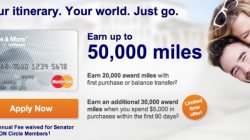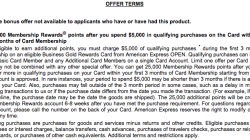A few days ago my girlfriend and I went to Six Flags Over Texas. We had planned this little trip for weeks, and now that the day was finally here, I was excited. Not only for the world famous roller coasters and cholesterol-inducing Texas food, but also because I knew that Discover had a partnership with Six Flags and was offering 5% cash back for all Six Flags purchases up to $200. Including entrance tickets.
“That’s $10 in cash back!” I thought to myself as I eagerly applied my sunscreen and donned my hat (we’re very careful about sun exposure). “What other card could possibly match that for a day at the theme park?” We jumped in the car and headed off on our adventure.
As we approached the parking entrance, I noted the signs everywhere promoting the Discover/Six Flags 5% cash back deal. No doubt about it — this was for realz! I eagerly pulled out my wallet to pay the $20 parking fee, anticipating my first saved dollar of the day. And that’s when it hit me…
I had left my Discover card at home.
I knew exactly where it was — sitting in my desk drawer along with all the other cards I rarely use. I had only assumed it was in my wallet because I had just finished buying materials at Home Depot with it for the 5% cash back there last quarter. But the quarter was ending and I figured I was done with Home Depot, so I took it out and put it away, not even thinking about our Six Flags day.
I hung my head as I handed my plain old Chase British Airways card over to the parking attendant. As if on cue, the attendant cheerily chirped at me. “Do you have a Discover card? Because if you use your Discover card for this purchase, you’ll get 5% cash back!” With each piercing word I could feel the money draining from my bank account, 5 pennies per dollar at a time. I shook my head sadly as the $20 fee was charged to my British Airways, earning a measly 25 Avios.
But I was determined to make up for my mistake. As we parked, I took a quick mental inventory of the other cards in my wallet. Could any of them get me a bonus at the park? Any kind of bonus at all? The British Airways is 1.25 Avios per dollar on everything, so at least that’s something. My Citi Prestige still has lots of unreleased flight points, so that’s effectively a 2x bonus. And I got a retention bonus for my Chase Ink Bold that requires $5,000 in spend for 10,000 extra UR points. That makes it a 3x card for the time being.
Still not as good as the missed 5% though, which Six Flags took great pride in reminding me of literally everywhere we went…

My girlfriend glanced at me as we waited in line for the Runaway Mountain. “You’re still thinking about the points, aren’t you?”
Now in all fairness, she says that pretty much all the time. And she’s right pretty much all the time. But had I become so fixated on the lost cash back that I could no longer take pleasure in our day at the park? Was the bonus that vital to my enjoyment? Am I so preoccupied with the rewards game that missing a single extra point results in overwhelming feelings of dread and doom?
Have we become overly obsessed with bonus categories?
Bonuses bonuses everywhere!
How exactly do category bonuses get so complicated? Well, if you’re like me (and I know that many of you reading this are exactly like me except with more furniture and not as much passion for chili) you’ve got a whole bunch of credit cards, and the bonuses on your cards fall into roughly 3 different groups…
First, you’ve got a set of cards that have standard category bonuses that never change, like an American Express Premier Rewards Gold that gets 2x points for groceries or the Chase Ink cards with their famous 5x office supply bonuses. These categories are pretty easy to remember, and if that were all we had to do, category bonuses would be a pretty simple business.
Except you’ve also got a set of cards with regularly rotating category bonuses, usually changing every quarter. The Chase Freedom cards are best known for this, but Discover is also on board with the rotating concept. So now you’ve got to reset your mind (and your wallet) every 90 days to take into account the changes. This is where it starts to get a bit tricky, but it’s still relatively manageable.
But then on top of that, banks such as Citibank and Barclays have taken it upon themselves to start throwing around “limited time” bonus offers. These usually appear as a targeted mail or e-mail suggesting that you can earn something like “2 extra points per dollar spent at all gas stations up to 2,500 bonus points during the months of March and April!” So not only do you need to remember yet another temporary bonus category, but this one has a cap on it, so you’ve got to keep track of exactly how much you’ve already spent in the category lest you go over and end up with the dreaded 1x multiplier, which is also known as the “I completely wasted that spend I’m so stupid” multiplier.
Let’s also not forget that if you’re working on a minimum spend for a recently acquired new card or cards, it’s necessary to figure that into the mix as well. Yes, you’ve got to finish up that $10,000 in 3 months to get your 100,000 bonus AAdvantage miles, but you don’t want to miss out on the 2.14x Chase Sapphire Preferred dining bonus. Much better to only put non-bonused spend towards the signup spend if at all possible, unless the temporary 1.2x multiplier for your US Airways card expires before the window for the Citibank signup bonus spend closes, in which case you might be better off doing the signup spend in the 3rd month following the blue moon when Jupiter is rising towards Pluto but before the lights go out on Broadway.
At this point, most of us need to sit down, pour ourselves a stiff drink, and write up a comprehensive spreadsheet to determine what bonuses we’re getting where and for how long so we can have some sort of rational system for spending. But after three gin & tonics (OK, maybe four), we’ve got it all set and we know what we’re doing.
Except we forgot to include another variable – what is each type of point worth? Sure, I might get 5x on everything for the Club Carlson card, but Club Carlson points are worth less than 1 cent each and maybe half as much as an Ultimate Rewards point. So that makes the Chase Sapphire Preferred the place to go on First Fridays even though it’s 3.21x instead of 5x. But ThankYou points are worth 1.6 cents when redeemed for American Airlines tickets while holding a Citi Prestige card, which means we might want to use our Citi Premier card that’s tied together with our Prestige to get 3x on dining which equates to 4.8 cents against any American ticket. But cash is more valuable than miles so if I use a cash back card and something else and another thing and don’t forget this and ARE WE REALLY OUT OF GIN ALREADY??? I JUST BOUGHT THIS BOTTLE!
And that’s how category bonuses get so complicated.
Complexity versus convenience
But while some people might prefer the simplicity of just remembering and carrying one credit card, the complexity of the game is part of the fun for us. Maximizing bonuses is a big part of this hobby.
Only how much time and effort are we pouring into figuring out how to maximizing our bonuses, and how much are we gaining with all that effort?
Let’s go back to my Six Flags example. If I had my Discover card and spent the full $200, that 5% is worth $10 flat. No more, no less. So let’s say hypothetically that all I had in my wallet instead was that plain old British Airways Visa card earning 1.25x Avios on every dollar. For my $200 spend, I’d get 250 Avios. There are many different ways of valuing those Avios and we can’t know how much they’re actually worth until the moment we redeem them, but for the sake of argument let’s estimate that they’re worth 1.4 cents each.
That means we would have ended up with $3.50 worth of value instead of $10 cash. In percentage terms, that’s a lot — the cash back is worth almost 3 times as much as the Avios. But in cash terms, it’s six dollars and fifty cents. I’m all for counting and saving every penny, but most of us spend that much on popcorn at the movie theater. And that’s the medium popcorn. (Though just in case you didn’t know, for 50 cents more you can get the large popcorn which is more popcorn than any human being will consume in their average lifetime but it’s only 50 cents more so you should probably do it, right?)
What if we kept it even simpler and just put a Barclay Arrival card in our wallet? It gets 2.2% back on everything. So at Six Flags, we’d be leaving $5.60 on the table by not bringing along our Discover card, but everywhere else we’re getting more than double the normal Discover 1% cash back. And we only have to carry one card.
Now, is there a happy medium between carrying only 1 card and carrying all 24 credit cards that we have open at any given time? Of course. But my point is that we can get overly focused on all these category bonuses to the point where we lose sight of the fact that 3-4 cards in our wallet will probably suffice for 95% of our everyday transactions. If we’re routinely shopping for groceries with a card earning rewards at 1.2x, we can probably improve on that a bit. But if we miss an occasional category bonus here or there because we forgot or made a mistake or just didn’t want to spend hours figuring it all out, maybe we don’t need to worry about it quite so much.
The Devil’s Advocate says try not to obsess about bonus categories. At least not too much.
In the end, I split all our Six Flags expenses between my Ink and my Prestige and probably averaged around 2.5x on everything. That means I lost at most $5 by leaving my Discover at home, and that’s if you assume Chase points and ThankYou points are only worth 1 cent each (undoubtedly they’re worth much more). So in the end, everything worked out just fine.
More importantly, we rode the Texas Giant, the Mine Train, and Mr. Freeze backwards! Backwards, I say! And we ate funnel cake! Is there anything better than funnel cake? Even when I have to pretend I don’t see the Discover 5% cash back promotional sign sitting in front of the funnel cake cashier…
Last Week’s Recap – High Annual Fee Cards
I always enjoy reading and responding in the comments section of Devil’s Advocate posts and last week is a great example of why. There were some truly different perspectives on my post on high annual fee credit cards (see “The First Step To Recovery Is Admitting You Pay High Annual Fees“). While a lot of people agreed that high annual fee cards are often not worth keeping beyond the first year, we were reminded by one of our regular readers Darth Chocolate that people who travel internationally on a frequent basis and truly utilize a premium card’s benefits can find real value in that high annual fee. Alan and Ax Plat Mx also pointed out that in countries outside the USA, that $450 annual fee is more like $750 or $800! Gotta get an awful lot of benefits to make that price worth it.
Let me also mention that I got one very specific offline perspective on the post from my girlfriend, who asked me several times who the hell all these bikini women were that were showing up when I pulled out my AmEx Platinum card. Don’t worry, sweetie, they’re just AmEx employees. I’ll never take them to Six Flags, even for 5% cash back. Never!
Devil’s Advocate is a weekly series that deliberately argues a contrarian view on travel and loyalty programs. Sometimes the Devil’s Advocate truly believes in the counterargument. Other times he takes the opposing position just to see if the original argument holds water. But his main objective is to engage in friendly debate with the miles and points community to determine if today’s conventional wisdom is valid. You can suggest future topics by sending an email to dvlsadvcate@gmail.com.




